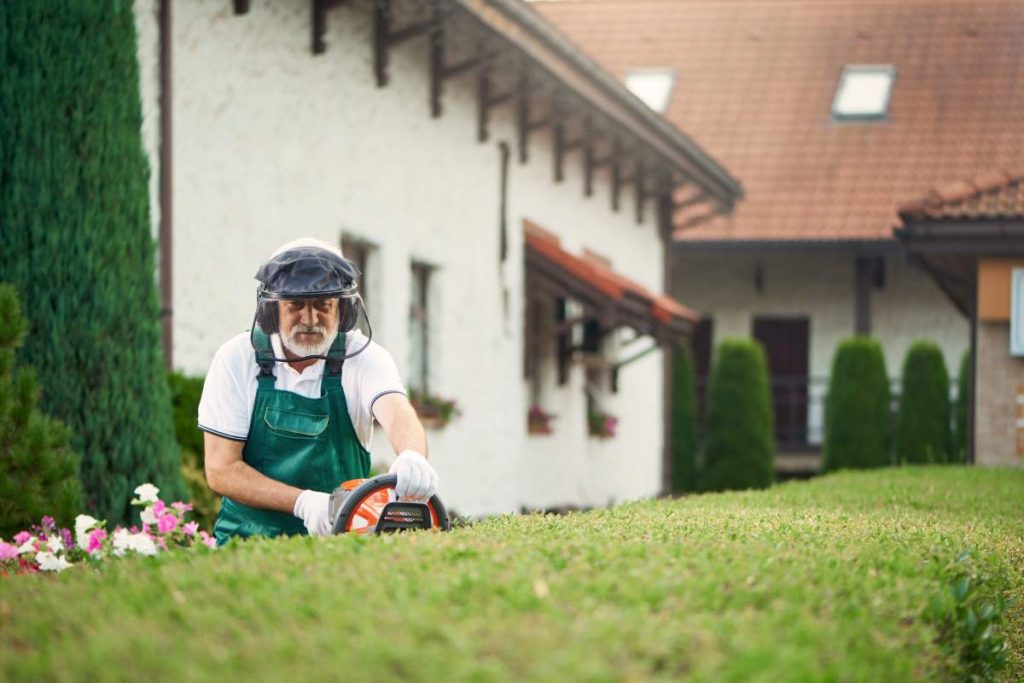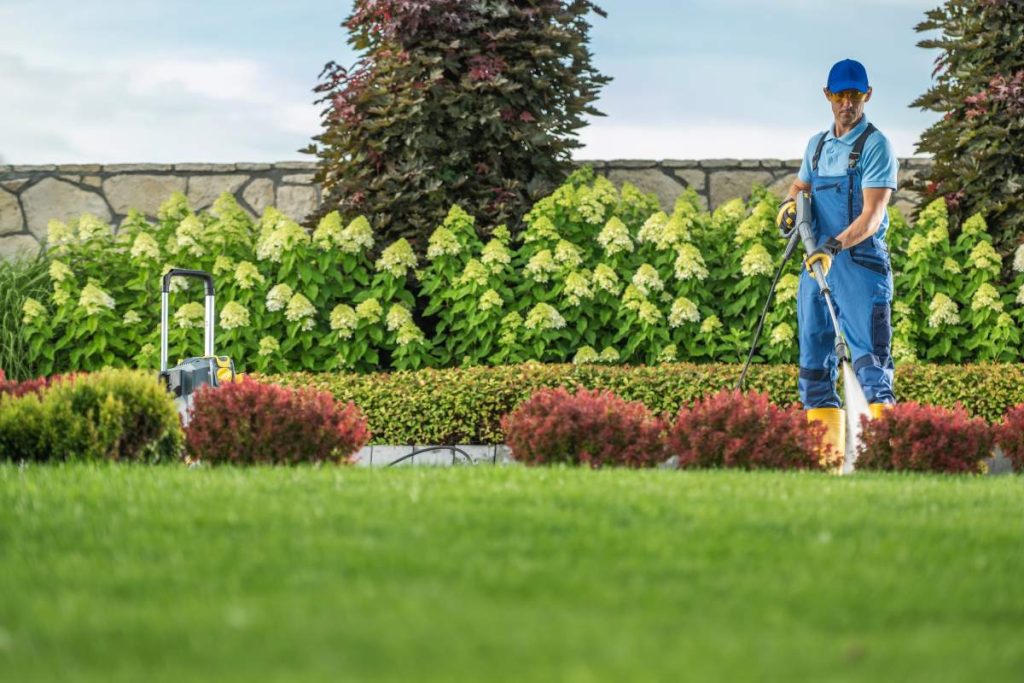Maintaining a beautiful lawn can significantly enhance the appeal and value of your property. Whether it’s a well-manicured front yard or a lush backyard for relaxation, lawn care plays a critical role in preserving both the aesthetic and environmental quality of your outdoor space.
In Australia, the cost of lawn care services varies widely depending on factors like lawn size, type of services required, geographic location, and frequency of maintenance. As we are in 2024, let’s take a closer look at the typical costs associated with lawn care and the factors that influence these costs.
You might also read:
Factors Affecting Lawn Care Costs
Lawn Size
The size of your lawn is one of the most significant factors that determine how much you’ll spend on lawn care. A small residential lawn will cost considerably less to maintain than a sprawling garden estate.
Many lawn care companies charge by square meter, with rates ranging from $30 to $60 per hour depending on the complexity of the job and the size of the lawn.
Type of Services
The cost of lawn care services also depends on what services you need. Basic lawn care, which includes mowing and trimming, will cost less than more specialized services such as lawn aeration, fertilization, and weed control. Some common lawn care services include:
- Lawn Mowing: On average, lawn mowing services cost between $40 and $80 for a standard residential lawn. For larger properties or more difficult terrains, the price can rise up to $150 per session.
- Edging and Trimming: This service, which involves cutting the edges around pathways, gardens, and driveways, may add an extra $10 to $50 to your bill depending on the length of edges to be trimmed.
- Fertilization: Professional fertilization services help maintain healthy lawns. Expect to pay around $50 to $100 per application, depending on the size of your lawn and the type of fertilizer used.
- Weed Control: Weed control can cost between $60 and $120, depending on the method used and the size of the area to be treated.
- Aeration: Lawn aeration, which helps improve soil drainage and grass health, can cost between $70 and $150 for a typical residential lawn.

Geographic Location
Where you live in Australia significantly affects lawn care prices. Major cities like Sydney, Melbourne, and Brisbane typically have higher costs due to increased labour rates and demand for services. Lawn care costs in rural or regional areas tend to be lower but can still fluctuate based on the availability of service providers.
Here’s a general idea of how much lawn care may cost across different regions in Australia:
- Sydney: Lawn care services in Sydney typically range from $50 to $100 per session for an average residential lawn.
- Melbourne: Costs are slightly lower in Melbourne, with prices ranging from $45 to $90 per session.
- Brisbane: Brisbane homeowners can expect to pay around $50 to $95 per session.
- Perth and Adelaide: Lawn care costs are generally lower in these cities, averaging between $40 and $80 per session.
Frequency of Service
The frequency of lawn care maintenance also plays a key role in determining the cost. Regular maintenance, such as weekly or bi-weekly mowing, will result in a lower per-service charge compared to irregular or seasonal visits. If you opt for a one-off service, be prepared to pay a premium.
- Weekly service: Often priced at around $40 to $60 per session.
- Fortnightly service: Slightly higher at around $50 to $70 per session.
- One-off service: One-off lawn care services may cost up to $100 to $150, depending on the complexity of the job.
DIY Lawn Care vs. Hiring Professionals
Homeowners often weigh the cost of hiring a professional lawn care service against doing it themselves. If you have a small lawn and the time to dedicate to its upkeep, DIY lawn care might be a cost-effective option.
However, for larger properties or those with specific needs, hiring a professional can save time, effort, and potentially money in the long run by ensuring your lawn is cared for properly.
DIY Costs
If you choose to maintain your lawn yourself, you’ll need to factor in the cost of purchasing or renting lawn equipment, fertilizers, weed control products, and other supplies. Basic lawn maintenance equipment includes:
- Lawnmower: Expect to spend between $200 and $1,000 for a quality lawnmower, depending on the size and type.
- Edger/Trimmer: Prices range from $50 to $300.
- Fertilizers and Weed Control Products: DIY products can cost around $50 to $150 annually, depending on the size of your lawn.
While the initial investment can be high, the long-term savings could be substantial, especially if your lawn requires minimal upkeep.
Pros of Hiring Professionals
- Expertise: Lawn care professionals have the knowledge and experience to identify issues with your lawn and recommend the best solutions.
- Time-saving: Hiring a professional allows you to focus on other tasks, especially if you have a busy schedule.
- Quality Equipment: Professional lawn care services use commercial-grade equipment, which often leads to better results than most homeowners can achieve with standard consumer products.
- Consistency: Professionals provide regular maintenance, ensuring that your lawn stays in peak condition year-round.

Seasonal Lawn Care Costs
Australia’s climate varies significantly depending on the region, and so do the lawn care needs throughout the year. Summer and spring are the busiest times for lawn care services due to the increased growth of grass and weeds.
During these seasons, you may need to schedule more frequent mowing and maintenance. In contrast, winter usually requires less maintenance, with fewer lawn mowing sessions needed.
- Summer (December to February): Expect to pay slightly more for lawn care services, as the demand is highest during this time of year. Lawn mowing may need to be done weekly, costing around $50 to $70 per session.
- Winter (June to August): With less growth, you may only need to mow once a month. This can bring the cost down to around $40 to $60 per session.
Additional Lawn Care Services
In addition to basic lawn mowing, you may also require other services to keep your lawn looking its best. These can include:
- Lawn Restoration: If your lawn is in poor condition due to neglect or harsh weather, professional restoration services may be needed. This could include reseeding, top-dressing, or even laying new turf. Prices can range from $200 to $1,000 depending on the scope of work.
- Pest and Disease Control: Treating pests or lawn diseases requires specialized knowledge and can cost between $100 and $300 per treatment.
- Mulching: Mulching helps retain soil moisture and improve the health of garden beds around your lawn. This service typically costs between $100 and $250.
Tips to Save on Lawn Care Costs
- Regular Maintenance: Sticking to a consistent maintenance schedule can help prevent expensive lawn repairs down the road.
- Bundle Services: Some lawn care providers offer discounts if you bundle services such as mowing, fertilization, and weed control.
- Shop Around: Don’t hesitate to get quotes from multiple lawn care providers to find the best deal for your specific needs.
Final Thoughts
The cost of lawn care in Australia can vary depending on multiple factors such as lawn size, service requirements, and geographic location. Whether you choose to maintain your lawn yourself or hire a professional, staying informed about typical costs will help you make the best decision for your budget.
Remember that a well-maintained lawn not only boosts the curb appeal of your home but also contributes to a healthier, more enjoyable outdoor environment.


